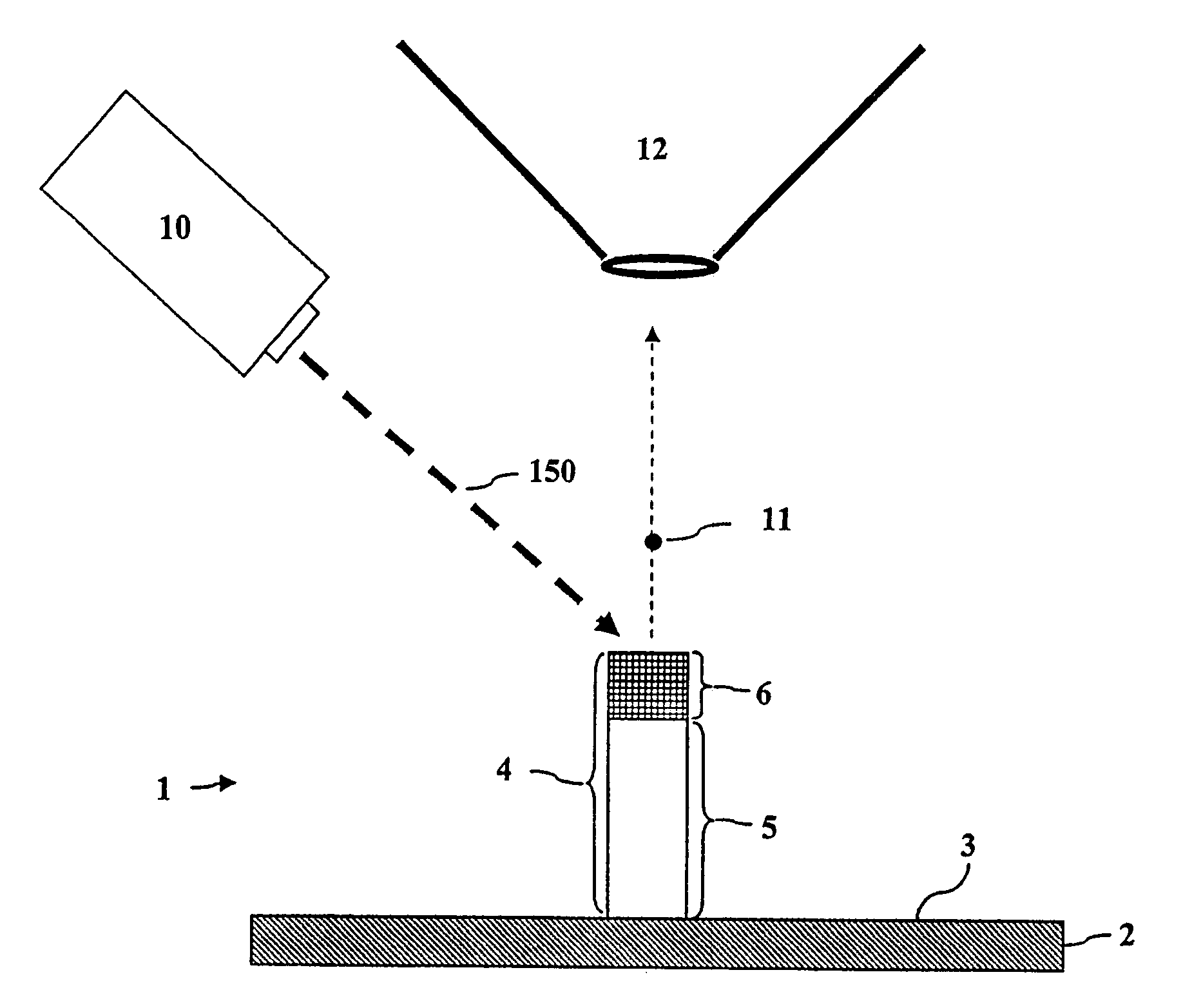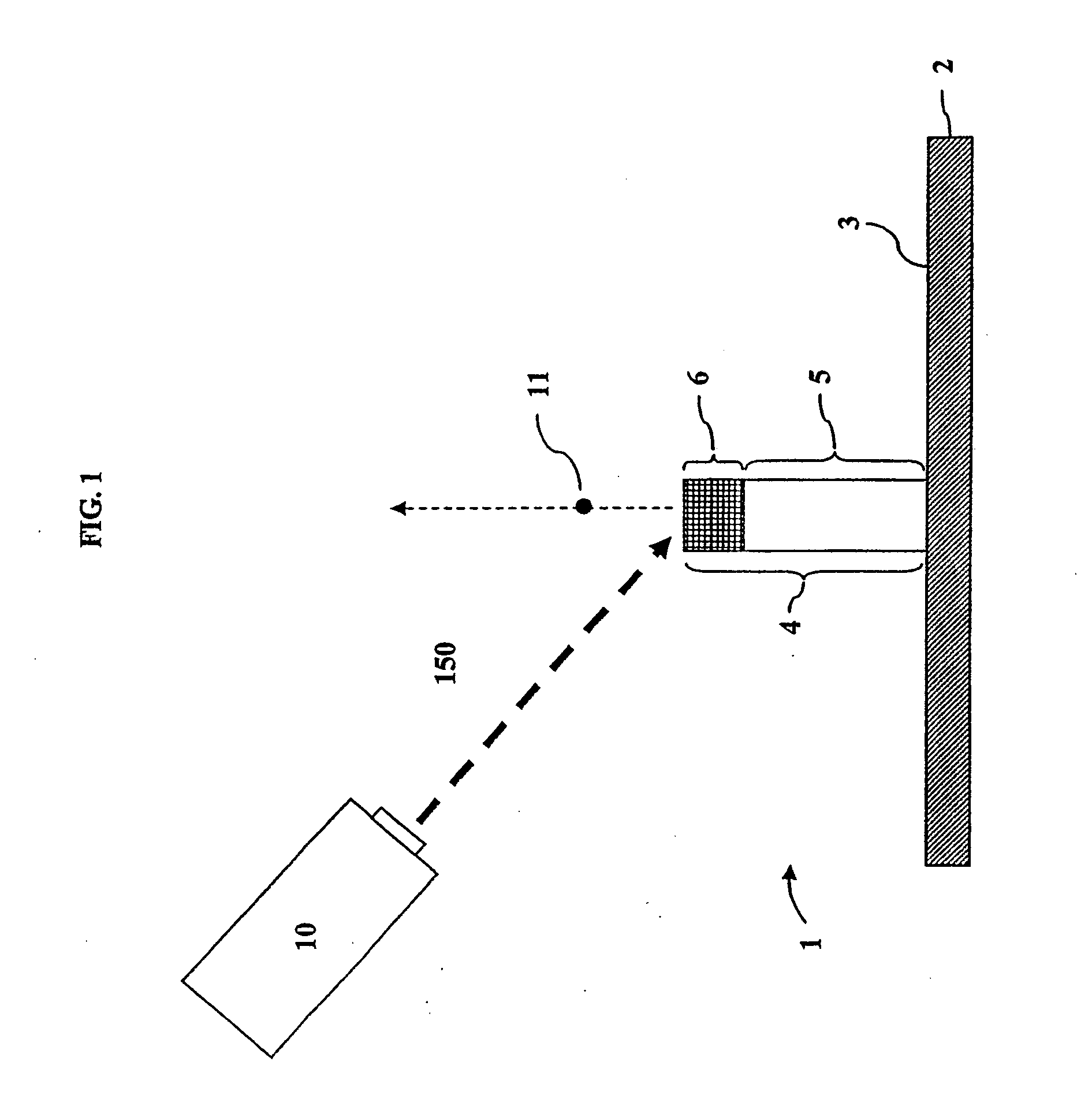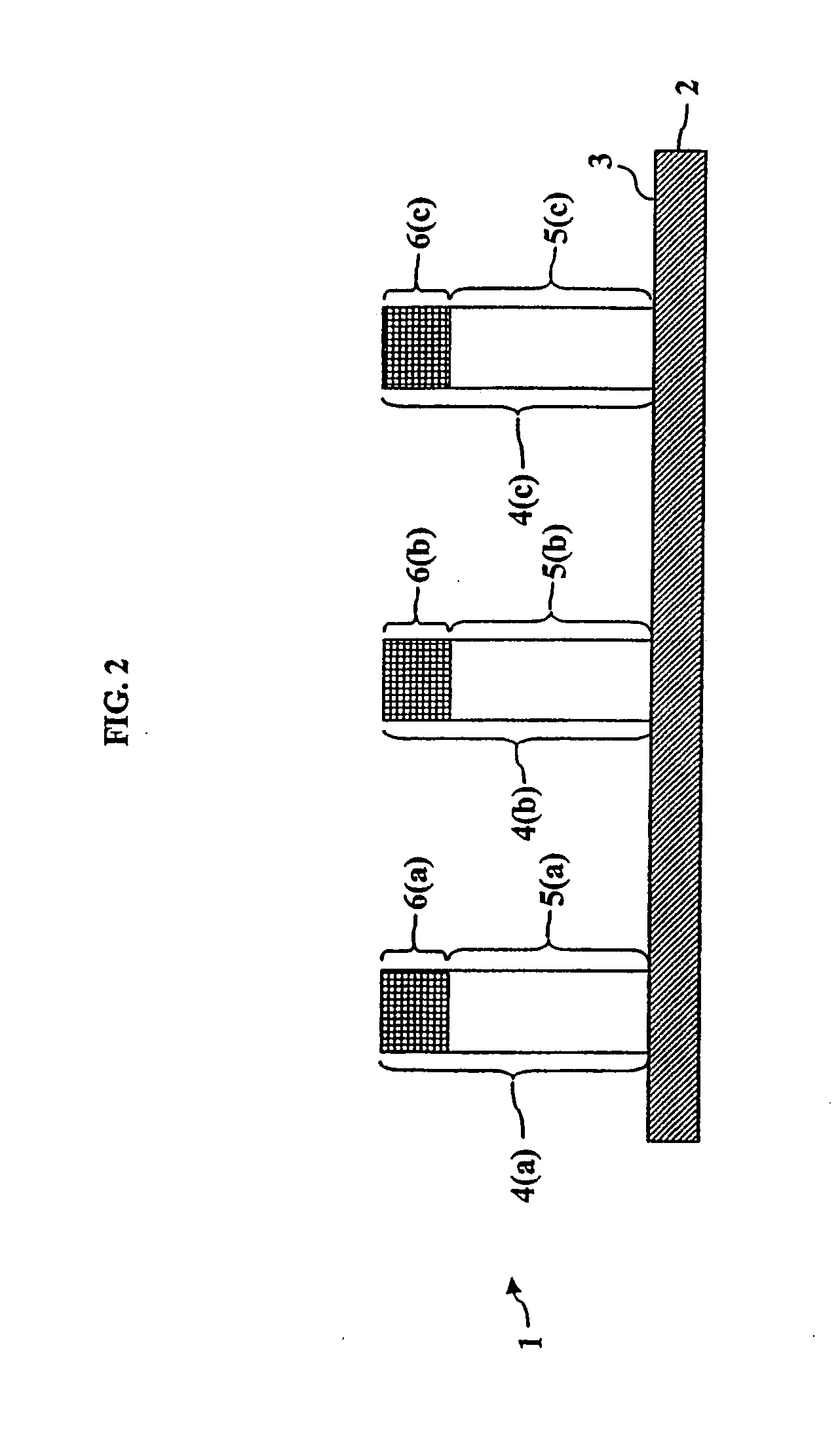Ion detection using a pillar chip
a technology of pillar chip and ionization, which is applied in the direction of material analysis using wave/particle radiation, particle separator tubes, biological material analysis, etc., can solve the problems of increasing the likelihood, difficult to obtain liquid samples such as samples of biological fluids (e.g. blood), and limited well density, so as to improve the desorption and ionization of samples, improve the electric field configuration, and reduce the desorption of contaminants
- Summary
- Abstract
- Description
- Claims
- Application Information
AI Technical Summary
Benefits of technology
Problems solved by technology
Method used
Image
Examples
Embodiment Construction
[0023]Embodiments of the invention may be used in any number of different fields. For example, embodiments of the invention may be used in pharmaceutical applications such as proteomic (or the like) studies for target discovery and / or validation as well as in diagnostics in a clinical setting for staging or disease progression. Also, embodiments of the invention may be used in environmental analyses for tracking and the identification of contaminants. In academic research environments, embodiments of the invention may be used in biological or medical research. Embodiments of the invention may also be used with research and clinical microarray systems and devices.
[0024]In embodiments of the invention, events such as binding, binding inhibition, reacting, or catalysis between two or more components can be analyzed. For example, the interaction between an analyte in a liquid sample and a binding agent bound to a sample zone on a pillar may be analyzed using embodiments of the invention...
PUM
| Property | Measurement | Unit |
|---|---|---|
| volumes | aaaaa | aaaaa |
| width | aaaaa | aaaaa |
| width | aaaaa | aaaaa |
Abstract
Description
Claims
Application Information
 Login to View More
Login to View More - R&D
- Intellectual Property
- Life Sciences
- Materials
- Tech Scout
- Unparalleled Data Quality
- Higher Quality Content
- 60% Fewer Hallucinations
Browse by: Latest US Patents, China's latest patents, Technical Efficacy Thesaurus, Application Domain, Technology Topic, Popular Technical Reports.
© 2025 PatSnap. All rights reserved.Legal|Privacy policy|Modern Slavery Act Transparency Statement|Sitemap|About US| Contact US: help@patsnap.com



